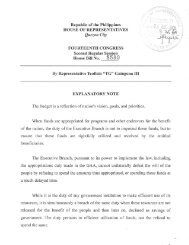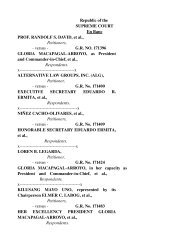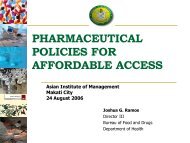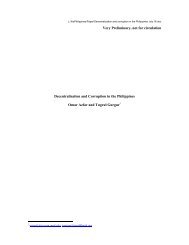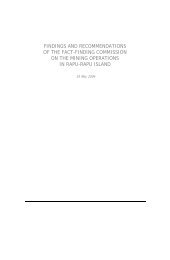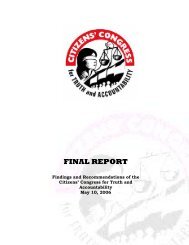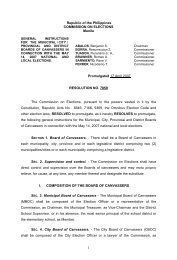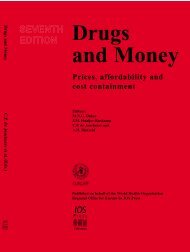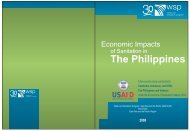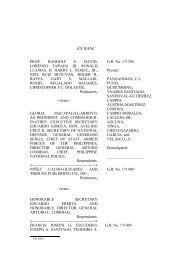Ecowaste Coalition - Philippine Center for Investigative Journalism
Ecowaste Coalition - Philippine Center for Investigative Journalism
Ecowaste Coalition - Philippine Center for Investigative Journalism
You also want an ePaper? Increase the reach of your titles
YUMPU automatically turns print PDFs into web optimized ePapers that Google loves.
TOXIC DEBT<br />
13<br />
The Dr. Paulino Garcia<br />
Memorial Hospital in<br />
Cabanatuan, Nueva Ecija<br />
maintains its own crypt<br />
in the public cemetery<br />
<strong>for</strong> its infectious waste.<br />
All the above instances are clear violations of the Clean Air Act prohibition against<br />
the burning of medical wastes. Joint DENR-DOH Administrative Order No. 2, series of<br />
2005, specifically requires that all medical waste, instead of being incinerated or<br />
burned, should instead undergo microbial inactivation be<strong>for</strong>e final disposal in a landfill.<br />
The approved treatment processes <strong>for</strong> medical waste — which include microwave and<br />
autoclave treatment technologies — are clearly defined in the DOH’s Health Care<br />
Waste Management Manual. 9<br />
While the decision of the DOH to decommission all the Hoval incinerators was<br />
laudable in terms of protecting the environment and making good on its responsibility to<br />
safeguard public health, the loan <strong>for</strong> those incinerators presents an onerous burden <strong>for</strong><br />
the country. Since 2002, the <strong>Philippine</strong>s is allocating a little less than 2 million dollars a<br />
year to pay <strong>for</strong> the loan’s principal and interest. The Hoval incinerators are a 2-million<br />
dollar obligation of the country until 2014.<br />
The Hoval loan is a huge drain in the government’s budget <strong>for</strong> health if compared<br />
vis-à-vis DOH’s budget allocations. This year the DOH operates on an P11-billion<br />
budget, P420 million of which is intended to address the backlog in infrastructure. The<br />
Hoval loan payment due this year is a fourth of the DOH’s infrastructure budget.<br />
For local health programs, the DOH has allocated P120 million and another P100<br />
million <strong>for</strong> the government’s disease-free initiatives <strong>for</strong> the elimination of old and<br />
emerging diseases. The Hoval loan payments <strong>for</strong> this year roughly equals the DOH’s<br />
budget <strong>for</strong> local health programs and the prevention of emerging diseases combined.<br />
According to the WHO, the <strong>Philippine</strong> government’s total expenditures on health<br />
as a percentage of the country’s total health expenditures in 2003 were a mere 30.3 %,<br />
which pales in comparison to Thailand’s 61.6 % or Malaysia’s 58.2 %. 10 Calculated as a<br />
percentage of the country’s GDP, the <strong>Philippine</strong>s’ s total expenditures on health is at<br />
3.2 %, well below the recommended 5 % of the WHO.<br />
9<br />
Department of Health, Health Care Waste Management Manual, http://www2.doh.gov.ph/hcwm/default.html (July 9, 2007)<br />
10<br />
World Health Organization, “Annex Table 2 Selected indicators of health expenditure ratios, 1999 -2003,” in The World<br />
Health Report 2006 - Working together <strong>for</strong> health, www.who.int/whr/2006/en/ (March 2007).<br />
ECO WASTE COALITION<br />
THE ONEROUS AUSTRIAN LEGACY OF MEDICAL WASTE INCINERATION IN THE PHILIPPINES



